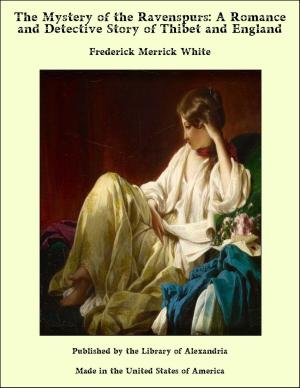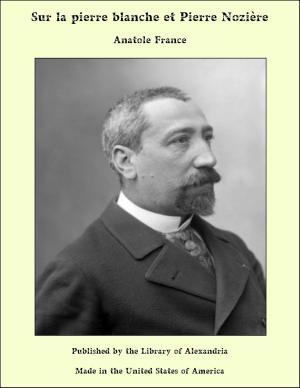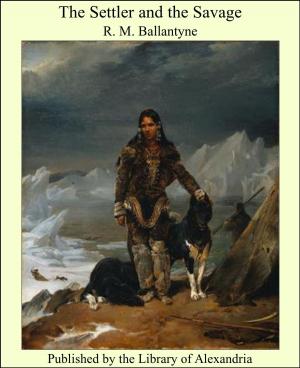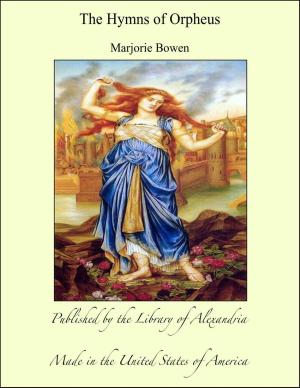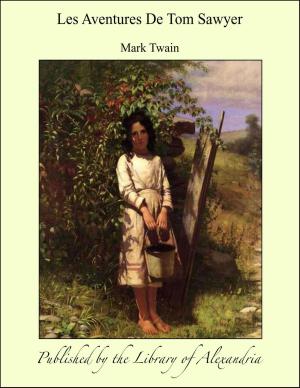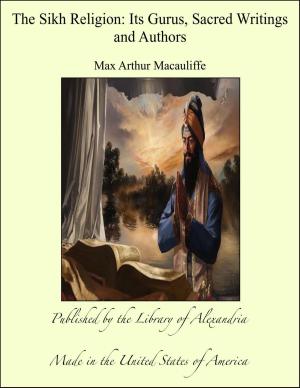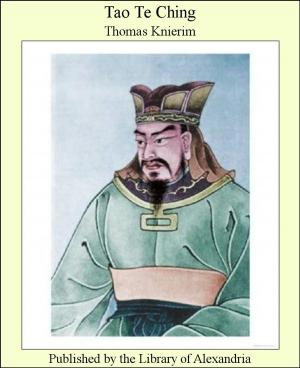Life's Dawn on Earth: Being the History of the Oldest Known Fossil Remains, and their relations to Geological Time and to the Development of the Animal Kingdom
Nonfiction, Religion & Spirituality, New Age, History, Fiction & Literature| Author: | Sir John William Dawson | ISBN: | 9781465606624 |
| Publisher: | Library of Alexandria | Publication: | March 8, 2015 |
| Imprint: | Language: | English |
| Author: | Sir John William Dawson |
| ISBN: | 9781465606624 |
| Publisher: | Library of Alexandria |
| Publication: | March 8, 2015 |
| Imprint: | |
| Language: | English |
Every one has heard of, or ought to have heard of, Eozoon Canadense, the Canadian Dawn-animal, the sole fossil of the ancient Laurentian rocks of North America, the earliest known representative on our planet of those wondrous powers of animal life which culminate and unite themselves with the spirit-world in man himself. Yet few even of those to whom the name is familiar, know how much it implies, and how strange and wonderful is the story which can be evoked from this first-born of old ocean. No one probably believes that animal life has been an eternal succession of like forms of being. We are familiar with the idea that in some way it was introduced; and most men now know, either from the testimony of Genesis or geology, or of both, that the lower forms of animal life were introduced first, and that these first living creatures had their birth in the waters, which are still the prolific mother of living things innumerable. Further, there is a general impression that it would be the most appropriate way that the great procession of animal existence should commence with the humblest types known to us, and should march on in successive bands of gradually increasing dignity and power, till man himself brings up the rear. Do we know the first animal? Can we name it, explain its structure, and state its relations to its successors? Can we do this by inference from the succeeding types of being; and if so, do our anticipations agree with any actual reality disinterred from the earth’s crust? If we could do this, either by inference or actual discovery, how strange it would be to know that we had before us even the remains of the first creature that could feel or will, and could place itself in vital relation with the great powers of inanimate nature. If we believe in a Creator, we shall feel it a solemn thing to have access to the first creature into which He breathed the breath of life. If we hold that all things have been evolved from collision of dead forces, then the first molecules of matter which took upon themselves the responsibility of living, and, aiming at the enjoyment of happiness, subjected themselves to the dread alternatives of pain and mortality, must surely evoke from us that filial reverence which we owe to the authors of our own being, if they do not involuntarily draw forth even a superstitious adoration. The veneration of the old Egyptian for his sacred animals would be a comparatively reasonable idolatry, if we could imagine any of these animals to have been the first that emerged from the domain of dead matter, and the first link in a reproductive chain of being that produced all the population of the world. Independently of any such hypotheses, all students of nature must regard with surpassing interest the first bright streaks of light that break on the long reign of primeval night and death, and presage the busy day of teeming animal existence.
Every one has heard of, or ought to have heard of, Eozoon Canadense, the Canadian Dawn-animal, the sole fossil of the ancient Laurentian rocks of North America, the earliest known representative on our planet of those wondrous powers of animal life which culminate and unite themselves with the spirit-world in man himself. Yet few even of those to whom the name is familiar, know how much it implies, and how strange and wonderful is the story which can be evoked from this first-born of old ocean. No one probably believes that animal life has been an eternal succession of like forms of being. We are familiar with the idea that in some way it was introduced; and most men now know, either from the testimony of Genesis or geology, or of both, that the lower forms of animal life were introduced first, and that these first living creatures had their birth in the waters, which are still the prolific mother of living things innumerable. Further, there is a general impression that it would be the most appropriate way that the great procession of animal existence should commence with the humblest types known to us, and should march on in successive bands of gradually increasing dignity and power, till man himself brings up the rear. Do we know the first animal? Can we name it, explain its structure, and state its relations to its successors? Can we do this by inference from the succeeding types of being; and if so, do our anticipations agree with any actual reality disinterred from the earth’s crust? If we could do this, either by inference or actual discovery, how strange it would be to know that we had before us even the remains of the first creature that could feel or will, and could place itself in vital relation with the great powers of inanimate nature. If we believe in a Creator, we shall feel it a solemn thing to have access to the first creature into which He breathed the breath of life. If we hold that all things have been evolved from collision of dead forces, then the first molecules of matter which took upon themselves the responsibility of living, and, aiming at the enjoyment of happiness, subjected themselves to the dread alternatives of pain and mortality, must surely evoke from us that filial reverence which we owe to the authors of our own being, if they do not involuntarily draw forth even a superstitious adoration. The veneration of the old Egyptian for his sacred animals would be a comparatively reasonable idolatry, if we could imagine any of these animals to have been the first that emerged from the domain of dead matter, and the first link in a reproductive chain of being that produced all the population of the world. Independently of any such hypotheses, all students of nature must regard with surpassing interest the first bright streaks of light that break on the long reign of primeval night and death, and presage the busy day of teeming animal existence.


